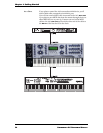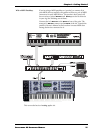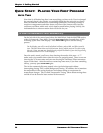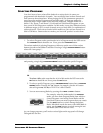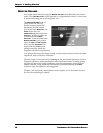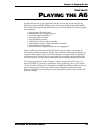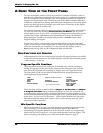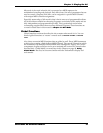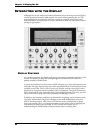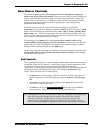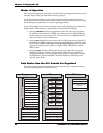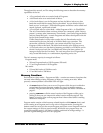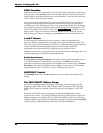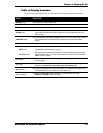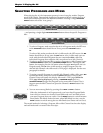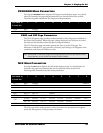
Chapter 2: Playing the A6
32 ANDROMEDA A6 REFERENCE MANUAL
INTERACTING WITH THE DISPLAY
Although the A6 has numerous knobs and buttons across its front panel, the display
(and its associated controls) is the central area to use when operating the A6. This
concept holds true in all modes: with few exceptions, virtually every front panel
knob and button are duplicated on-screen, and most of them will show their current
settings if appropriate.
DISPLAY FEATURES
As a general principle, the display will group a function’s parameters together on the
screen. This makes creating and editing Programs and Mixes much easier, as is
getting around in Global mode.
A group of parameters on the screen is called a display page. Some A6 functions have
more than one page because they have more parameters than can be displayed in the
available screen area. This is called a multi-page display and the active page’s title is
displayed on a page tab which resembles a tab in a notebook. The active parameter’s
title is displayed in white characters with a black-highlighted tab. This way, you will
always know which page and which parameter on that page is active.
In addition, the display’s usefulness is enhanced by depicting certain functions with
a graphic. Furthermore, the picture changes as you make adjustments to its para-
meters. Envelope shapes, LFO waves and Velocity curves are displayed in graph
form, just to name a few. A visual representation of the item(s) you’re changing not
only makes the editing process faster, it will (in many cases) assist you in
understanding the functionality of the parameters you’re working with.



